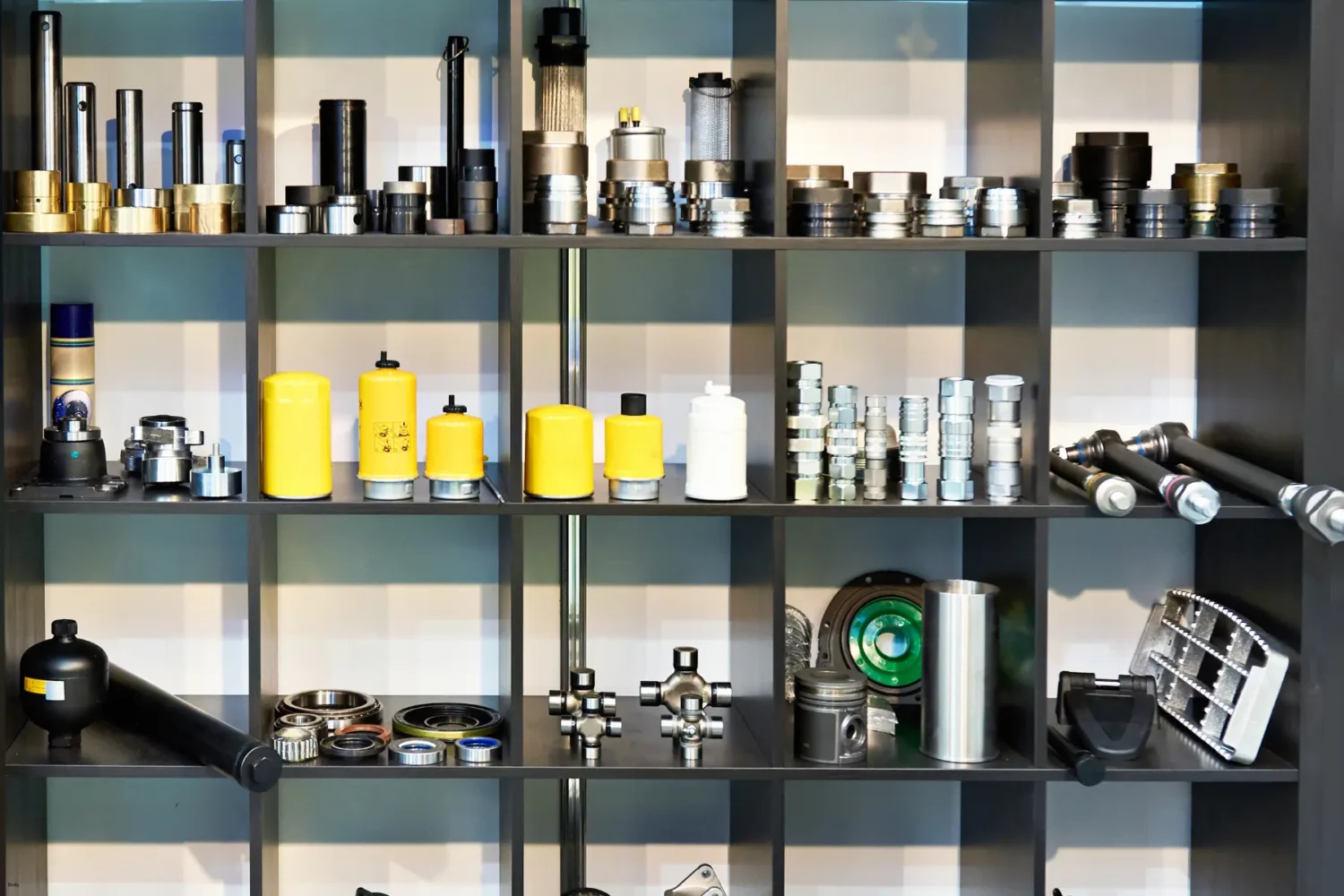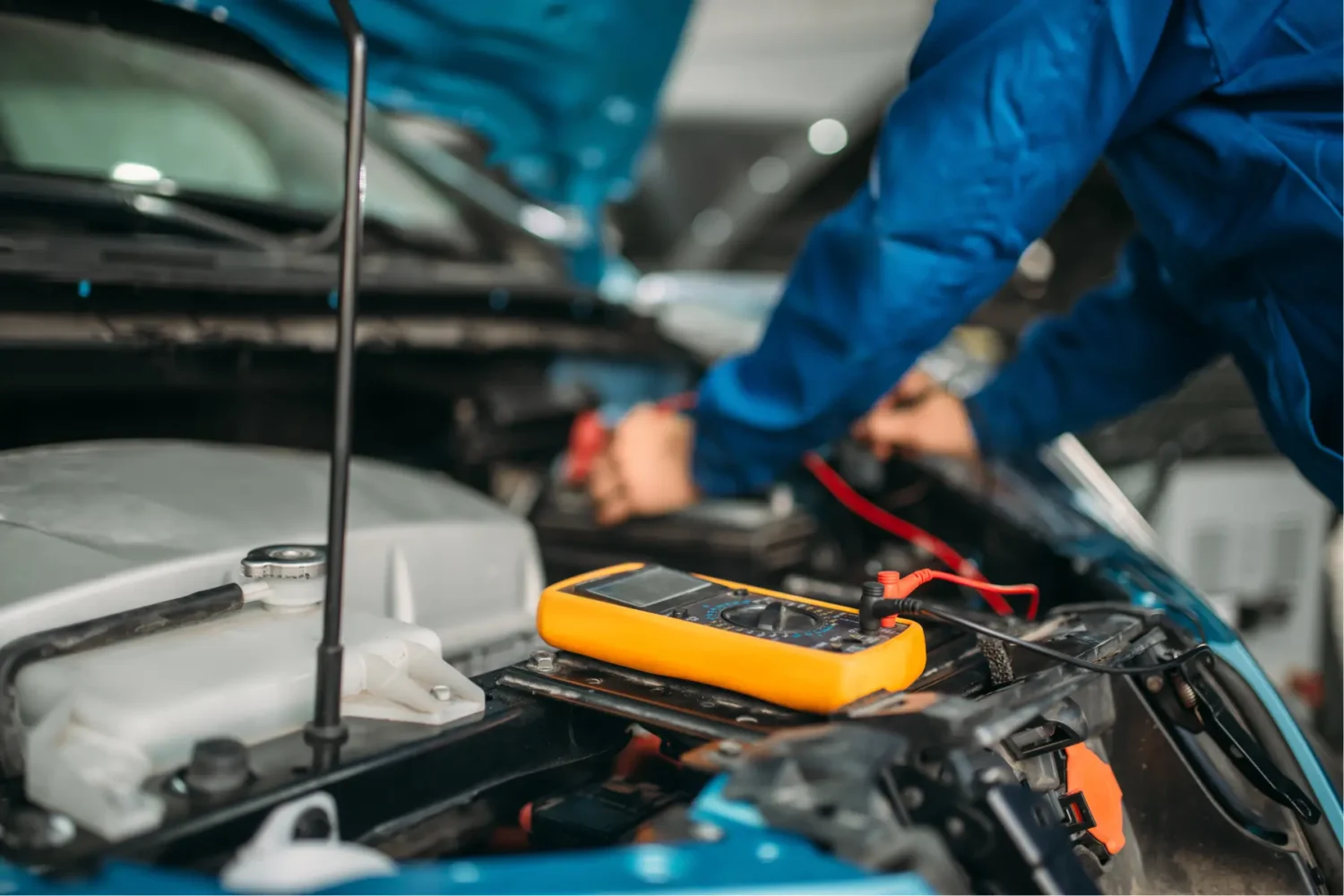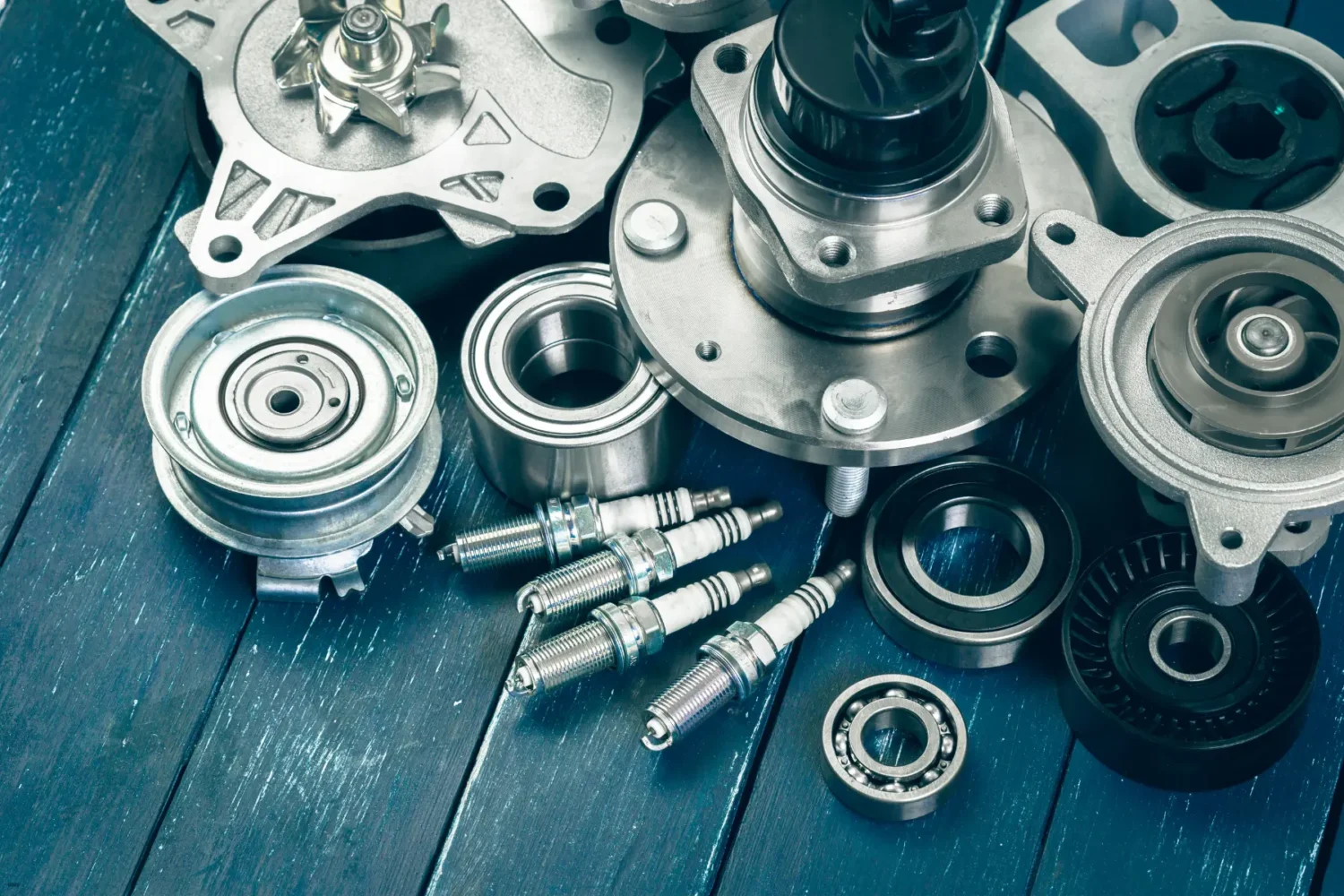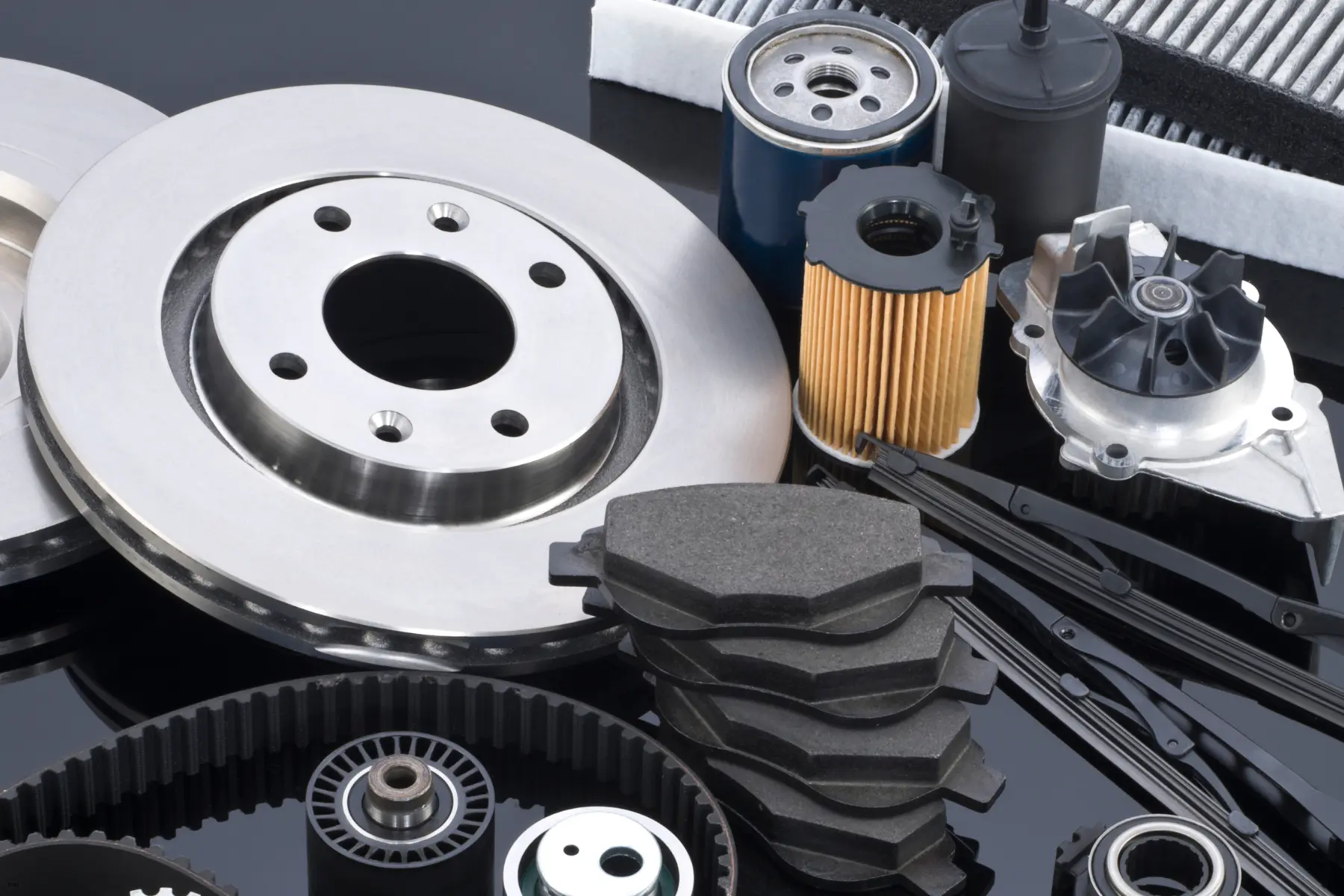Regular maintenance is crucial for keeping your vehicle running smoothly and efficiently. Neglecting routine car upkeep tips can lead to premature part failure and increased repair costs over time. By adhering to a maintenance schedule, you not only ensure your car’s optimal performance but also its safety. Checks and servicing can diagnose and fix problems before they escalate into more serious issues, ultimately extending the lifespan of car parts and saving you money on potential future repairs.

Understanding the Lifespan of Key Car Parts
Car Fuel Pump Lifespan
Typically, a fuel pump should last between 100,000 to 150,000 miles, depending on the vehicle’s make and model. Maintaining the fuel pump involves ensuring that the fuel filter is replaced at recommended intervals to prevent clogs, which can strain the pump. Additionally, keeping the fuel tank at least one-quarter full at all times helps avoid overheating, which can wear out the pump prematurely.
Shock Absorbers and Car Shocks Lifespan
Shock absorbers are pivotal for a smooth ride, influencing the control and longevity of your vehicle’s suspension system. The car shock absorber lifespan usually ranges from 50,000 to 100,000 miles. Factors such as driving habits and road conditions play a significant role in their wear and tear. Routine inspections can catch leaks or damage early, which is essential for timely replacements to maintain vehicle stability and comfort.
Power Steering Fluid Lifespan
The power steering fluid lifespan is crucial for the smooth operation of your car’s steering system. Typically, it should be changed every 50,000 to 100,000 miles. However, this can vary based on the manufacturer’s recommendations and driving conditions. Old or contaminated fluid can cause increased steering effort, squealing noises, and eventually lead to pump damage if not addressed in time.
Maintaining Fuel Pumps and Shocks
Signs of a Failing Fuel Pump
A fuel pump is essential for delivering fuel from the tank to the engine, and its failure can lead to a variety of issues that might impair your vehicle’s functionality. Here are some common indicators:
- Sputtering Engine: At high speeds, the engine may start to sputter or jerk, indicating that the fuel pump is unable to deliver a consistent stream of fuel. This inconsistency can cause the engine to struggle to maintain speed, resulting in noticeable performance drops during highway driving or other high-speed scenarios. Such signs are early warnings that the fuel pump may be deteriorating and require attention.
- Loss of Power When Accelerating: When a vehicle hesitates or struggles more than usual during acceleration, it might be suffering from fuel pump inefficiency. This loss of power is often most noticeable when attempting to increase speed quickly, such as when merging onto a highway or overtaking another vehicle. A sluggish and unresponsive engine may result from the pump’s incapacity to deliver the required fuel rate.
- Loss of Power When Carrying Heavy Loads: A failing pump may also manifest as a loss of power when the vehicle is under more strain than usual, such as when climbing hills or carrying heavy loads. The additional weight increases the demand for fuel, which a compromised pump may struggle to meet, leading to noticeable power deficits during these high-demand situations.
- Surging: Unexpected surges in speed may occur if the pump intermittently delivers too much fuel, followed by periods of insufficient flow. This can lead to a feeling of inconsistent and unpredictable acceleration, which can be both annoying and potentially dangerous if it occurs during traffic conditions that require smooth speed transitions.
- Decreased Fuel Efficiency: A decrease in miles per gallon can sometimes be attributed to an inefficient fuel pump that requires the engine to work harder. Such inefficiency can force the engine to compensate for the lack of proper fuel flow, leading to increased fuel consumption and higher operational costs.
- Noise in the Fuel Tank: An unusual noise, such as a whining or buzzing sound from the fuel tank, is often a telltale sign of a pump in distress. These sounds can be caused by wear and tear on the pump’s components, which can deteriorate over time due to age or contaminated fuel.
Addressing these symptoms early can prevent a complete fuel pump failure, which would result in a non-operational vehicle and potentially expensive repairs. Maintenance and early diagnosis of such issues are key to ensuring that your vehicle remains reliable and efficient. By paying attention to these signs and acting quickly, you can extend the life of your fuel pump and maintain your vehicle’s performance.
Tips for Extending Fuel Pump Lifespan
Regularly changing the fuel filter as recommended by your vehicle’s manufacturer helps maintain clean fuel flow and reduces strain on the pump. Avoiding running your car on a near-empty tank reduces the risk of the pump overheating and suffering wear from drawing in sediment settled at the bottom of the tank. Using high-quality fuel can prevent the build-up of deposits within the fuel system, ensuring smoother operation and longer car fuel pump lifespan.
Identifying Wear on Shocks and Shock Absorbers
Worn shocks and shock absorbers can drastically affect the driving experience by reducing stability and increasing braking distances. Signs of wear include visible fluid leaks from the shock absorbers, uneven tire wear, and an overall rough ride quality. If the car dips or sways more than usual during turns or when stopping, it might be time to inspect the shocks.
Importance of Regular Fluid Checks
Role of Power Steering Fluid
This fluid transfers force from the steering wheel to the steering gear, which then moves the wheels accordingly. Over time, the fluid can degrade or become contaminated, leading to harder steering, increased wear on system components, and potential failure. Routine car checks can ensure that the fluid remains clean and functional, maintaining the integrity and responsiveness of the steering system.
Preventing Steering System Issues
To avoid common steering system issues, such as stiffness, noises, or failure, as always, it’s important to adhere to a maintenance schedule that includes regular inspections and fluid replacements. Ensuring the system is free from leaks and that the fluid is at the correct level and condition can help prevent air from entering the system, which is a common cause of steering problems. By taking these preventative car maintenance steps, you can ensure a safer and smoother driving experience.
Comprehensive Vehicle Maintenance Schedule
Routine Car Servicing Essentials
It is a crucial aspect of car care essentials, helping to maintain operational efficiency and safety while extending the lifespan of its components. Here’s a closer look at some essential tasks included in effective car servicing:
- Oil Change: This process helps to lubricate the engine’s moving parts, minimizing wear and tear. Fresh oil prevents the buildup of harmful particles and sludge, which can degrade the engine’s performance and efficiency. Typically, mechanics recommend oil changes every 3,000 to 5,000 miles, depending on the vehicle make and model, to ensure optimal engine health and to prevent potential overheating.
- Brake Inspection: The braking system is vital for the safety of both the vehicle and its occupants. Regular inspections involve checking the brake pads, discs, and fluid levels. Worn pads or low brake fluid can lead to reduced braking efficiency and increased stopping distances, which could be hazardous. Mechanics often check for wear and tear on the components and ensure that the system is free from leaks, helping to prevent costly repairs and maintain crucial safety standards.
- Tire Rotation and Pressure Check: To ensure even tire wear and maintain good traction, regular tire inspections are essential. Rotating tires according to the manufacturer’s guidelines can extend their life and improve vehicle handling. Checking and adjusting tire pressure helps maintain optimal fuel efficiency and reduces the risk of tire failures. Properly inflated tires provide better performance and are less prone to accidents caused by blowouts or poor traction.
- Battery Check: A reliable battery is crucial, especially under extreme weather conditions which can severely test a battery’s performance. Regular testing and maintenance of the battery, including cleaning its terminals to ensure a solid connection, can prevent starting issues. This is particularly important as vehicle electronics become increasingly sophisticated, relying heavily on a consistent power supply from the battery.
- Air Filter Replacement: The air filter is essential for protecting the engine from airborne contaminants and ensuring it receives clean air. A clean air filter helps maintain an optimal air-fuel mixture, crucial for engine efficiency and performance. Replacing the air filter at recommended intervals supports engine longevity and performance, and can also improve fuel economy.
- Coolant Flush: The coolant system plays a vital role in preventing engine overheating and corrosion. Over time, coolant can become contaminated and less effective at heat management. A coolant flush involves replacing the old coolant with new, ensuring the cooling system operates at maximum efficiency and prevents overheating and internal engine damage.
Properly maintaining these components not only enhances the performance and safety of your vehicle but also contributes to its longevity and reliability. By adhering to a schedule, you ensure that your vehicle remains a reliable companion on the road.

Seasonal Maintenance Tips
Seasonal changes can significantly affect your vehicle’s performance. For example, winter demands more from your car’s battery and tires due to colder temperatures and potentially slippery roads. Before winter, it’s wise to check the antifreeze level, inspect the heater and defroster for proper operation, and consider switching to winter tires. Similarly, preparing for summer might include checking the air conditioning system and ensuring the coolant is topped up to help manage engine temperatures.
Preventative Car Maintenance Practices
Auto Care Tips to Prevent Rust and Corrosion
Rust can quickly escalate from a minor issue to significant damage, compromising both safety and value. To prevent this, several proactive measures can be taken to protect your vehicle against the harsh elements that contribute to rust and corrosion. Here are some of the best practices:
- Regular Washing: Regularly washing your vehicle is one of the simplest yet most effective ways to prevent rust. Salt, used on roads to manage ice in winter, can be particularly corrosive to the undercarriage and body of your vehicle. By washing your car frequently, especially after exposure to salted roads, you remove these harmful substances before they have a chance to corrode the metal. Thorough cleaning should include the undercarriage and hard-to-reach areas where salt and dirt may accumulate.
- Waxing: Applying a protective wax to your vehicle’s body works as a barrier against moisture, dirt, and chemicals. Waxing at least twice a year provides a shiny, protective layer that not only keeps the car looking new but also repels water and pollutants, which can lead to corrosion over time. This layer of wax helps in sealing the paint, reducing the risk of rust and maintaining the integrity of the exterior bodywork.
- Use Anti-Rust Spray: Anti-rust sprays are specially formulated to prevent corrosion on metal surfaces. Treating the undercarriage, wheel wells, and other rust-prone areas with an anti-rust spray can provide a protective coating that shields these parts from moisture and salt. Sprays are particularly useful in climates with high humidity or where roads are regularly salted during winter months.
By implementing these tips, you can significantly reduce the risk of rust and corrosion, which are among the top issues that degrade a vehicle’s value and functionality. It’s a worthwhile investment that pays off by saving you from future costly repairs and maintaining your vehicle’s market value.
Checking Belts and Hoses for Wear
Belts and hoses are critical to the proper functioning of your vehicle’s engine and cooling system but often go unnoticed until they fail. Check belts for cracks, fraying, or signs of wear, and ensure they are tight and correctly aligned. Hoses should be firm and free of cracks or bulges. Replacing worn belts and hoses can prevent breakdowns and serious engine damage, making these checks an essential part of vehicle maintenance tips.

Effective vehicle management is within every car owner’s reach. Understanding the basic requirements of car maintenance and the signs of wear and potential problems can empower owners to take proactive steps in caring for their vehicles. With the knowledge of when to perform routine car servicing and how to identify issues like a failing fuel pump or worn shocks, owners can make informed decisions that contribute to their vehicle’s longevity. This empowerment not only enhances the driving experience but also promotes safety and saves money on costly repairs down the line.




